Case Studies for the Dynamic gene expression profiling of the HepaRG cell line
Liver enzymes
Cytochrome P450s (P450s) are heme-containing oxidative metabolic enzymes which play critical roles in the biotransformation of endogenous compounds and xenobiotics and are found at highest concentrations in the liver. This enzyme superfamily consists of approximately 60 different enzymes in humans responsible for the biotransformation of endogenous compounds, pharmacological agents, and environmental xenobiotics. They account for 70 to 80 percent of drug metabolism. The highest expressed forms in liver are CYPs 3A4, 2C9, 2C8, 2E1, and 1A2, while 2A6, 2D6, 2B6, 2C19 and 3A5 are less abundant and CYPs 2J2, 1A1, and 1B1 are mainly expressed extrahepatically.

Figure 1: Most abundant liver CYPs
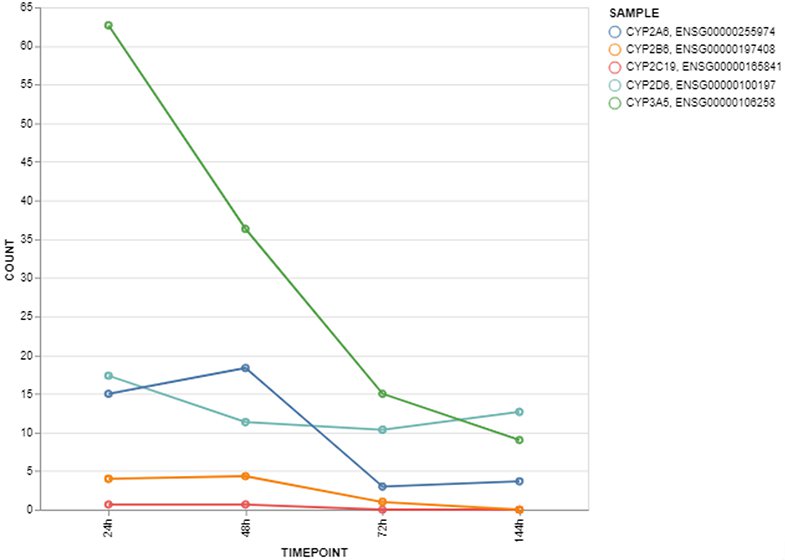
Figure 2: Less abundant liver CYPs
Transporters
Transmembrane transport proteins from the ABC and the SLC families mediate the uptake of endogenous compounds and xenobiotics into the hepatocyte as well as their elimination from the cells. The transfer of drugs and metabolites from the liver cell back to the bloodstream is accomplished mainly by multidrug resistance-associated protein 3 (MRP3 (i.e. ABCC3) and MRP4 (i.e. ABCC4), supported by MRP6 (i.e. ABCC6) and ABCA1.
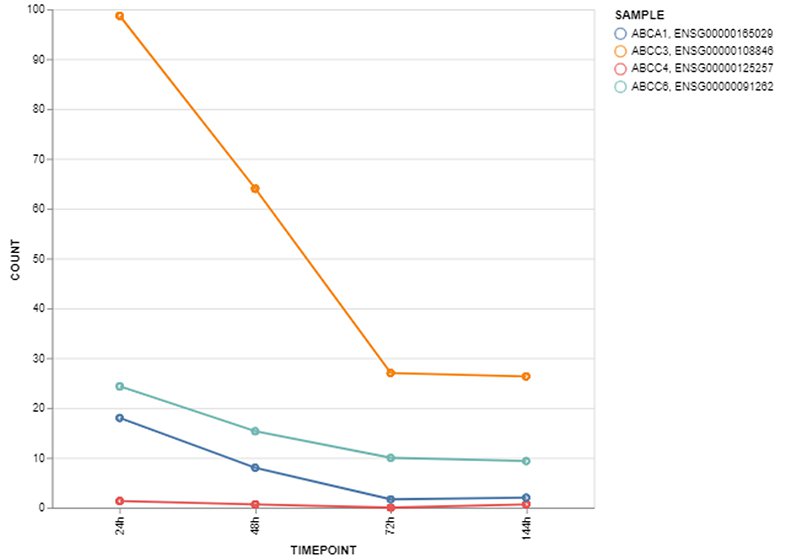
Figure 3: Efflux transporters from Hepatocytes to the bloodstream.
On the other hand, the efflux from the hepatocytes to the biliary canaliculi is mediated by several different transporters (MRP2 (i.e. ABCC2), BCRP (i.e. ABCG2), MDR1 (i.e. ABCB1) and MATE1 (i.e. SCL47A1)) and others. Among those, the bile salt export pump BSEP plays a major role in the efficient elimination of bile acids and their salts are toxic detergents.
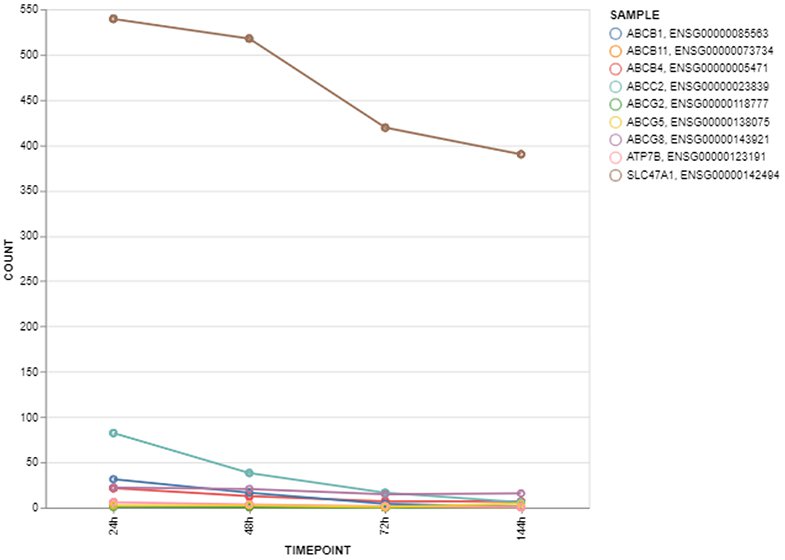
Figure 4: Efflux transporters (from the hepatocytes to bile canaliculi). MATE1 is the most expressed transporter in the HepaRG cell line.
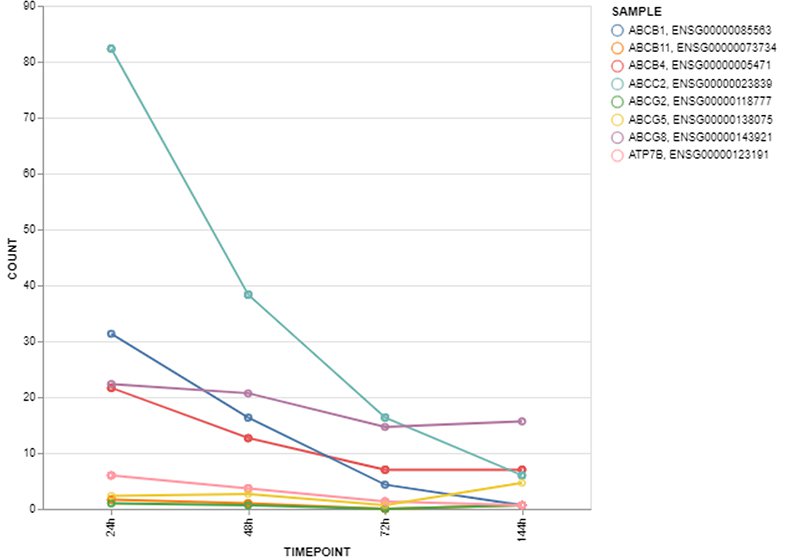
Figure 5: Efflux transporters expressed in the HepaRG cell line (from the hepatocytes to bile canaliculi). Without MATE1.
Hepatic uptake transporters (e.g., NTCP (i.e. SLC10A1), OATPs (SLCO1B1, SLCO1A4, SLCO1B2), OATs (SLC22A7) and OCTs (SLC22A1,SLCA7) are essential in the hepatic uptake of drugs from sinusoidal blood into the liver and are known to play a role in hepatic clearance and drug-drug interactions.
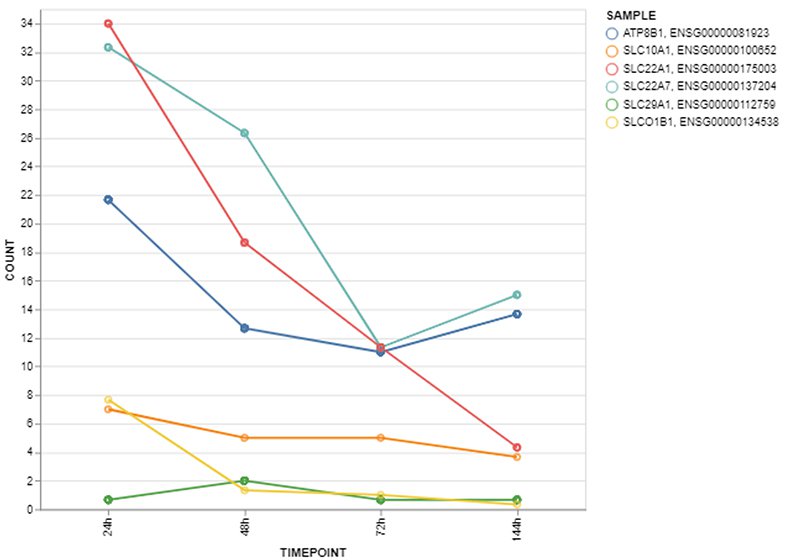
Figure 6: Uptake transporters present in the HepaRG cell line.
Coagulation factors
Most coagulation factors are synthesized by liver parenchymal cells. The coagulation factors synthesized by the liver can be divided into procoagulants, anticoagulants, profibrinolysis and antifibrinolysis factors.
The procoagulants produced by the hepatocytes are fibrinogen, prothrombin, factor V, factor VII, factor VIII, factor IX, factor X, factor XI, factor XII, factor XIII, Thrombopeietin. Fibrinogen is glucoprotein, encoded by the FGA, FGB and FGG genes. All 3 genes are very well expressed in the HepaRG cell line.
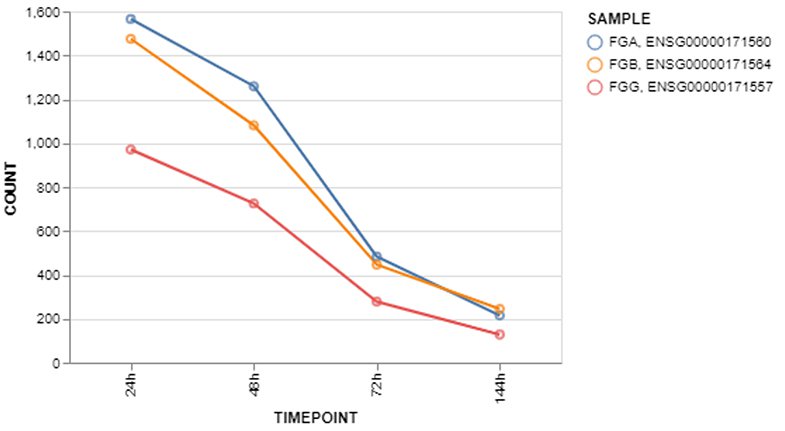
Figure 7: Expression of the 3 genes encoding Fibrinogen in the HepaRG cell line